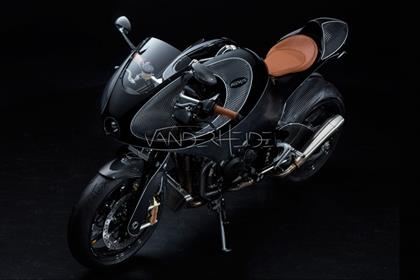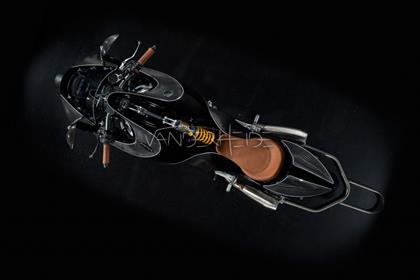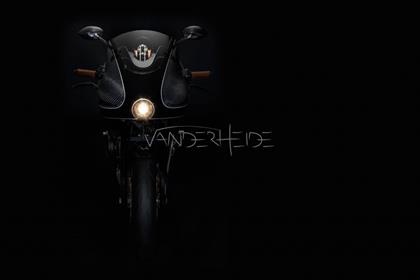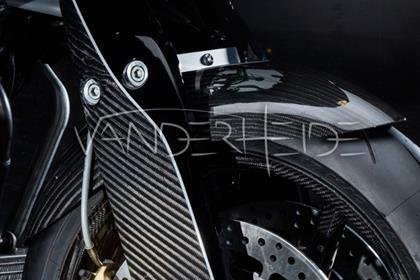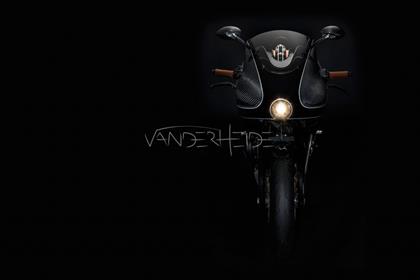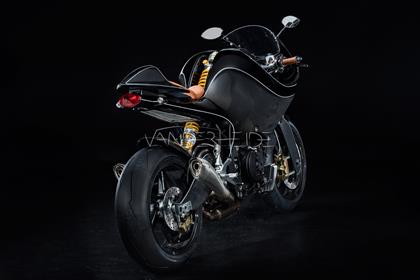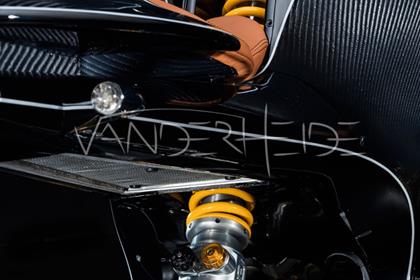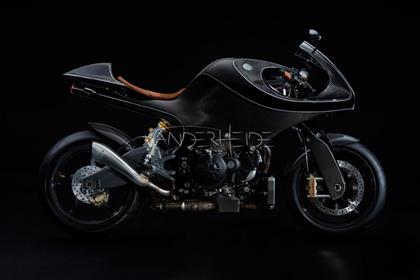Exotic engineering: VanderHeide's Dutch courage
201bhp carbon monocoque superbike can be yours for £125,000.
Dutch firm VanderHeide caused a stir at last month’s Goodwood Festival of Speed when they unveiled their new Aprilia RSV4-powered carbon-fibre sportsbike. But while the launch was a surprise the bike has actually been under development for five years.
It’s the work of brothers Rolf and Sjors Van der Heide. Sjors explained how it came about: “It’s my brother Rolf’s story really. Our father is a motorcyclist and as long as we remember we’ve always wanted to ride them and to build one. Rolf has an engineering background, I have a business administration background. He does all the engineering, I do the talking. That’s the combination.
TOP STORIES
- This week’s issue of MCN: BMW Scrambler first test
- Poll: After Crutchlow and Redding were so strong at the Sachsensring, can a Brit win at Silverstone?
- MotoGP: Ducati dominate Red Bull Ring test as KTM impress
- Product Review: Shark Helmet racing bag (£39.99)
“It all started in 2011 when Rolf decided to build his own bike. Before that he worked with Spyker, the supercar brand, and with Carver (makers of a tilting three-wheeled vehicle). After that he specialised in carbon fibre.
“There were two main ideas. The first was to use carbon fibre as the base material and second idea was to use his own suspension system, because he was never really pleased with telescopic forks.”
That description undersells the extent of the engineering. The carbon monocoque construction is a complete departure from conventional frames. It’s a single piece from nose to tail and acts as the chassis, bodywork and fuel tank. It also led to aerodynamic innovation, with the radiator mounted in the tail.
Van der Heide explained: “This is the most efficient way to position the radiator. The air comes in at the front and it flows in a straight line via the engine and through the radiator. There is a fan, too, and as far as we have tested it the position works just fine.”
Such a large carbon construction brought its own problems. “There’s no autoclave in Holland big enough to house these moulds,” says Sjors, “So we have an oven, which we built ourselves. The resin is vacuum-injected and then it’s put in the oven which is how the carbon fibre is dried.”
The front suspension is a variation on the Hossack-style girder fork. Made of carbon, the girders are mounted on double wishbones, using a pushrod and rocker to compress an Öhlins TTX36 shock mounted on the back of the fuel tank. Sjors said: “We’re used to considering these as rear shocks, but we use them both for front and rear. We position them in line and in opposite directions, so they compensate and eliminate the opposing forces. That reduces stress on the chassis.”
The carbon fibre doesn’t stop there; it’s also used for the swingarm and the BST wheels – some of the few bought-in parts. Others include the race-style Motec dash and Brembo brakes. The engine package includes all the stock Aprilia electronics to ease the process of type-approval and emissions conformity.
Weight comes in at 175kg dry for the road version, complete with luxuries like a leather seat, while the track model with 230bhp and no emissions restrictions will be 165kg dry.
VanderHeide is accepting pre-orders and hopes to move swiftly to production. “We can tailor the bike to a customer’s needs,” said Sjors. “We will measure the length of their legs and everything, they can choose the colour, they can choose to mount the superbike engine – so they can choose either a street-legal or a race track edition.”
The price for the standard edition will be 150,000 Euros.
Read more in this week’s issue of MCN.
Looking for the perfect two-wheeled companion? Visit MCN Bikes For Sale website or use Bikes For Sale App.
